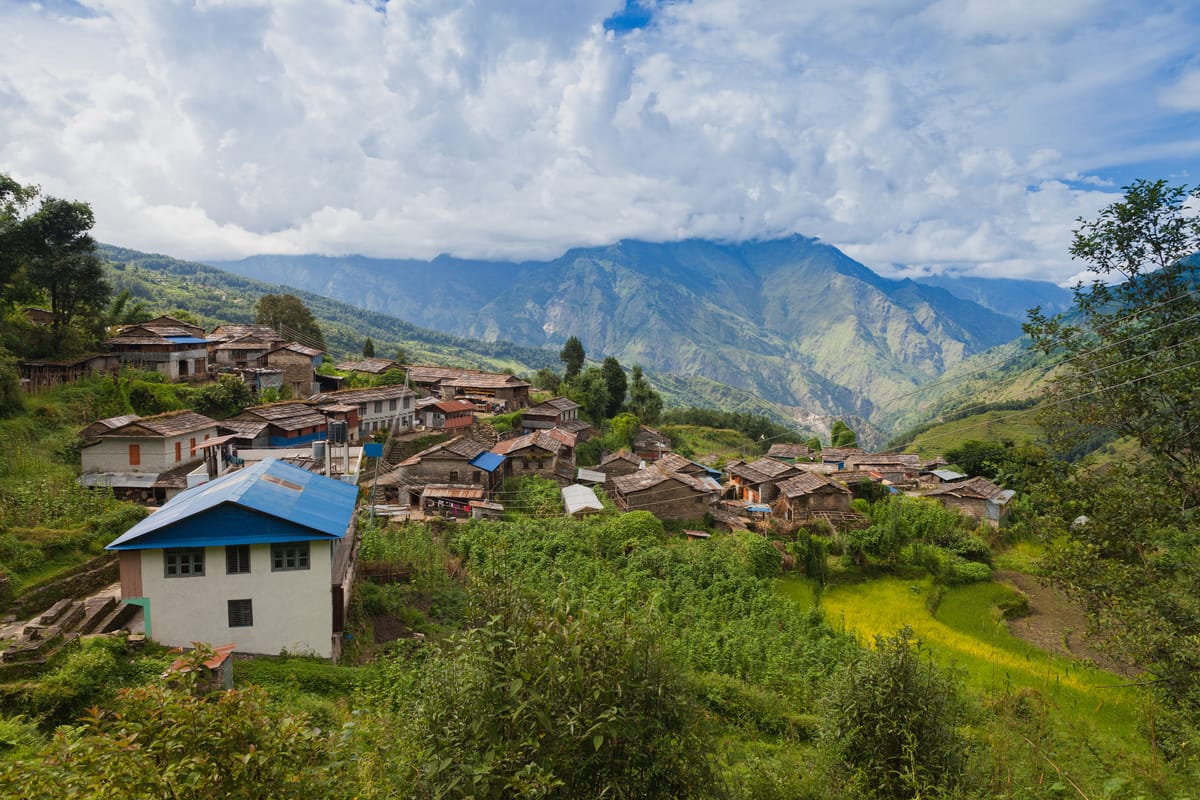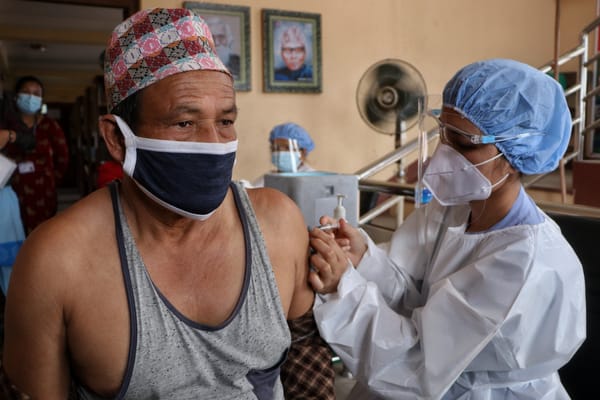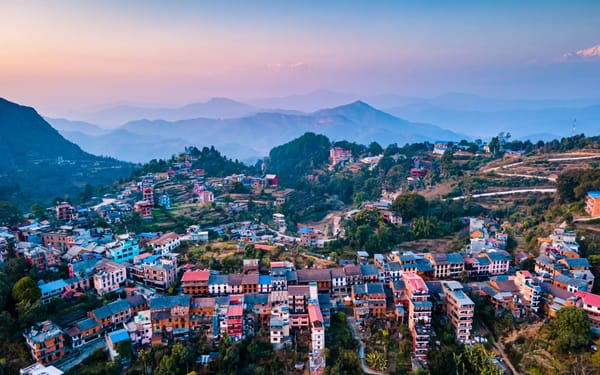No Clinic, No Doctor, No Excuse: Why Health Equity Can’t Wait in Nepal

In the highlands of rural Nepal, a mother cradles her feverish child, praying for the sun to rise so she can begin the long walk to the nearest health post — a post that may not have medicine, may not have a nurse, and may not even be open. In another village, a laborer with a festering wound treats himself with herbs, too far from medical care to consider seeking help. This is not fiction. This is daily life for millions in Nepal’s remote and underserved communities.
Health is a human right — yet in Nepal, geography still dictates survival. The absence of a clinic, doctor, or emergency response system is not just an unfortunate gap in coverage. It is a profound and preventable injustice. And in the face of that injustice, silence is not an option. There is no excuse for inaction. Health equity in Nepal can’t wait.
The Inequity is Systemic
Nepal is a country of breathtaking beauty and devastating contrasts. Its geography — a sweeping range of mountains, hills, and plains — poses immense challenges for transportation, infrastructure, and logistics. But geography alone is not the barrier. It is the lack of political will, strategic planning, and resource allocation that turns difficult terrain into dangerous neglect.
In urban areas like Kathmandu, healthcare options abound: private hospitals, specialists, diagnostics, and pharmacies. But travel just a few hours into the hills, and the picture changes drastically. Many districts have fewer than one doctor per 10,000 residents, and some health facilities operate without even basic first-aid supplies.
Villages may have buildings labeled “clinics,” but often they’re locked, unstaffed, or stocked with expired medications. Trained professionals avoid rural postings due to poor pay, lack of equipment, and social isolation. Meanwhile, citizens are forced to make impossible choices: sell livestock to pay for transport, delay care, or turn to untrained healers.
This is not merely a rural inconvenience — it’s a humanitarian failure.
The Human Cost
The data is sobering:
- Nepal’s maternal mortality rate remains one of the highest in South Asia.
- Many children under five die of preventable diseases like diarrhea, pneumonia, and measles.
- Chronic diseases such as hypertension and diabetes go undiagnosed and untreated in rural areas, leading to strokes, kidney failure, and early death.
- Mental health support is almost entirely absent in non-urban areas, despite growing need.
Behind every statistic is a name, a face, and a grieving family. These are preventable deaths—the result of a system that functions well for the few but fails the many.
Global Commitments, Local Failures
Nepal has committed to the United Nations’ Sustainable Development Goals, including achieving universal health coverage by 2030. But progress on this front has been painfully slow. Budget allocations for health remain low, especially for rural infrastructure and staffing. Government initiatives are often centralized, urban-focused, or poorly implemented at the local level.
Donor-funded programs have made a dent, but many are fragmented and temporary. The deeper issue is structural and cultural: a pattern of treating rural citizens as second-class when it comes to access and investment.
Healthcare cannot be reserved for the privileged. It cannot be a service of convenience. It must be treated as an essential public good.
A Call for Urgency
Why can’t health equity wait?
Because lives are being lost every day due to inaction, bureaucracy, and neglect. Each delay in expanding rural healthcare costs real lives — mothers, children, farmers, elders — people who contribute to their communities and the country but are denied the most basic right of care.
Because climate change and natural disasters hit the rural poor hardest. With Nepal’s vulnerability to landslides, floods, and earthquakes, a robust decentralized healthcare network is a matter of national resilience.
Because inequality breeds instability. A country where half the population lives in health insecurity cannot grow in peace or prosperity. Rural despair drives migration, deepens poverty, and widens the urban-rural divide.
Because we know how to solve it — and choosing not to is a failure of will, not imagination.
What Can Be Done
- Invest in Local Infrastructure
Building clinics is not enough. They must be staffed, equipped, and integrated with transportation, supply chains, and emergency systems. Every village should have reliable access to at least primary care and first response services. - Train and Incentivize Rural Health Workers
Nepal has a rich tradition of community health volunteers (FCHVs), but they need more training, respect, and compensation. Creating career pathways for rural healthcare professionals — with housing, hardship pay, and recognition — can encourage retention. - Embrace Mobile and Telehealth Solutions
With smartphones and solar power, it is now possible to deliver consultations, monitoring, and referrals remotely. Mobile clinics and telemedicine kiosks can bring expertise where brick-and-mortar hospitals can’t go. - Integrate Traditional Healers into the System
Many rural people rely on dhami-jhankris (traditional healers). Rather than dismissing them, we should engage and educate them as partners in early detection and referrals. - Involve Communities in Decision-Making
Rural populations must not be passive recipients of care but active architects of the health systems that serve them. Community engagement leads to more sustainable, culturally relevant solutions. - Track and Publish Data Transparently
Without accurate data on rural health outcomes and service delivery, policy remains guesswork. Mapping underserved areas and making this data public can drive accountability and smarter interventions.
The Role of Malla Medical
At Malla Medical, we have taken these challenges personally — and practically. Founded after the loss of a loved one to medical neglect in rural Nepal, our organization was created to close the care gap where it is widest.
We conduct health needs assessments in remote districts, train community health aides, deliver mobile health services, and collaborate with local governments to create sustainable, community-led health systems. We’re not a charity — we’re a partner in transformation.
We don’t claim to have all the answers. But we refuse to accept silence as one.
Hope is a Choice
Nepal’s rural health crisis is not inevitable. It is the result of decades of unequal investment, fragmented policy, and failure to listen to the most vulnerable. But what has been built can be rebuilt — stronger, fairer, and closer to the people.
Health equity is not a slogan. It’s a choice — to prioritize the well-being of every Nepali, not just the ones who live near hospitals.
It is a choice to stop asking whether rural lives matter and start acting like they do.
It is a choice to say: No clinic? No doctor? No excuse.
Because we can, and must, build a healthcare system where no one is out of reach — not by distance, poverty, or silence.



